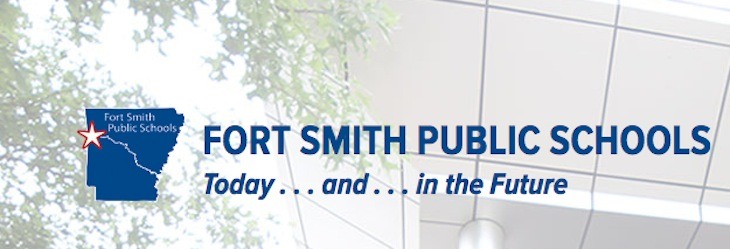Fort Smith Schools Superintendent on career readiness: There’s more we could be doing
by April 7, 2017 4:10 pm 948 views

First-year Fort Smith Public Schools (FSPS) Superintendent Dr. Douglas Brubaker is ready to address the career readiness gap for high school students, he told audience members at the Fort Smith Regional Chamber of Commerce First Friday Breakfast (April 7).
Brubaker, addressing challenges brought to him during his first 90 days in office, said the need “comes up consistently in our district,” adding, “There’s more that we could be doing.”
“There is an acknowledgment that the pendulum needs to swing. We’ve focused too long exclusively on kids that are college bound, and we need to provide more training and more guidance to help kids find careers beyond high school — the ones that don’t intend to go to college,” Brubaker said.
As part of the system going forward, Brubaker envisions students, who want to go career-first seeing minimum wage as “the floor” for their earning potential upon graduation.
“If I decide at 18 or 16 that I’m not on the college track, if I have an industry certification and I’m able to make $50,000 a year right out of college, then I can later decide to take on college when I have the financial resources to do it without accumulating a lot of debt. A lot of our families are concerned about that.”
Also, Brubaker added, if students decide instead to stay on the career path, the district needs to offer industry certifications that “allow you to further develop your skills and move forward in that direction.” As for students hoping to pursue college right after graduation, Brubaker wants the district to enable graduates to head into freshman year with 48 hours of college credit, the equivalent of an associate’s degree.
BUSINESS, COMMUNITY SUPPORT
Brubaker acknowledged there was already “great stuff” working in these two regards, and he credited businesses and the community-at-large for putting the district on the path to achieving its goals, praising events such as the iCan Career Expo, which began in October 2015. Taking place at the Fort Smith Convention Center, the annual event allows junior high school students to connect with area professionals in banking, transportation, medicine/healthcare, and trades, to get a sense of coursework relevant to a specific career.
“There are a lot of kids in our district, who don’t know the pathway to getting a job in a certain field, or they don’t know what college is all about. So to have that opportunity to interface with you is really valuable to our students,” Brubaker said.
He continued: “I’ve never seen in my 22 years of experience the kind of community and business support for a school district that we have in Fort Smith. When I walk into buildings, I see a plaque or banner on the wall that doesn’t indicate we have one partner in education for that school. It’s five, six, seven. And it’s not involvement in name only. People are in those buildings, and they’re working with our kids. It is making a difference.”
LOOKING AHEAD
Brubaker said he plans to move the district into a “strategic planning” phase by bringing in “outside facilitators to work with a cross-section of our community – people like area business leaders, teachers, staff, students – and ask, ‘What is it we want our kids to be able to know and do at the end of their high school careers?'”
“We want to develop a graduate profile. Once we’ve done that, it makes it a lot easier to make recommendations and decisions on what we need to create that final product. We begin with the end in mind and also ask, ‘What buildings and technologies do we need to provide that experience, those skill sets to our kids?” Brubaker said.
An upcoming millage vote will be one key component to enacting the strategic plan. In a December interview, FSPS School Board President Dr. Deanie Mehl said the vote – date to be determined – would be a major focus in 2017 for the School Board and the new superintendent, noting the district needs to address renovations on “at least five buildings,” including construction of tornado shelters at Southside and Northside High Schools as well as continued technology improvements across all schools.
